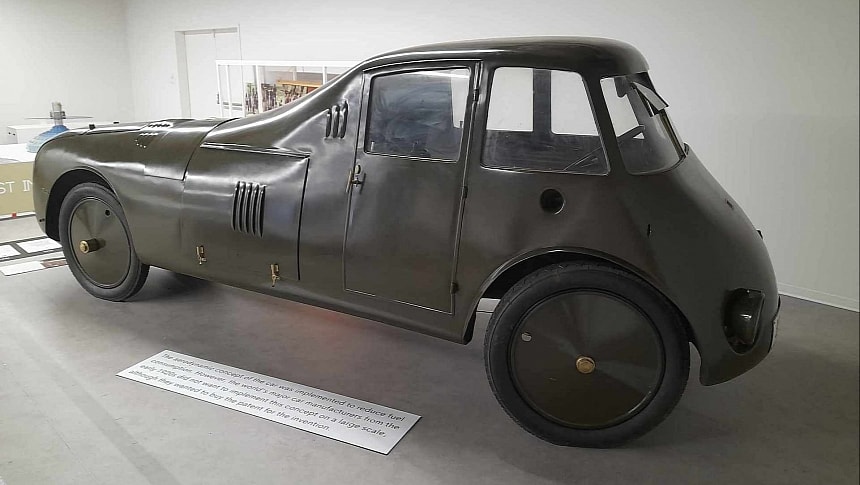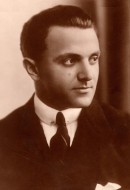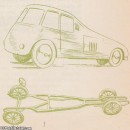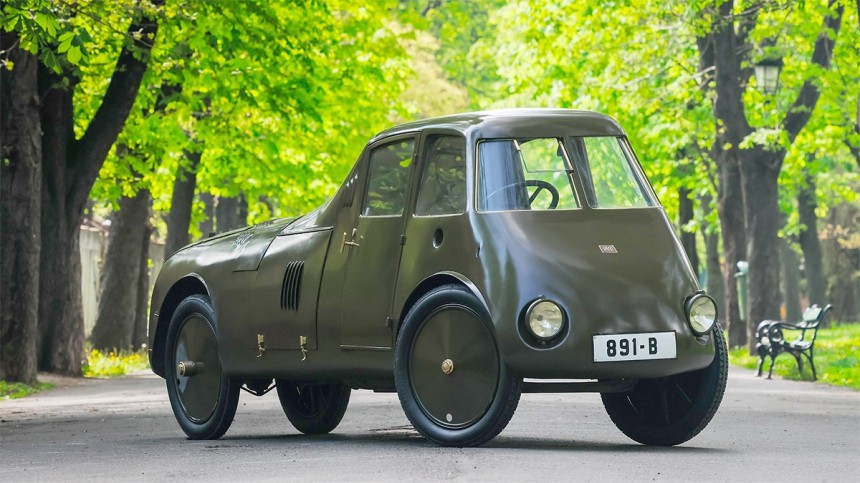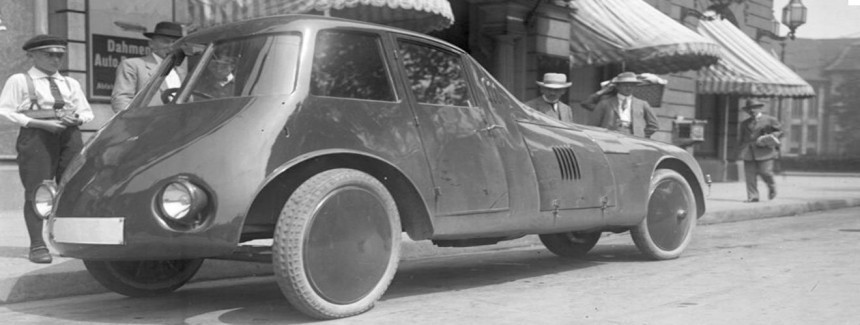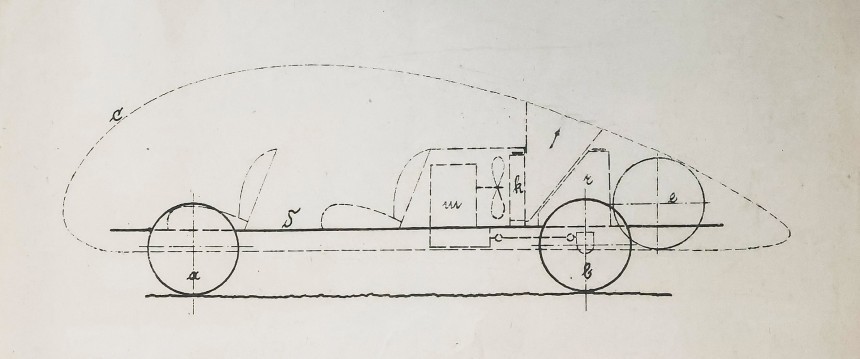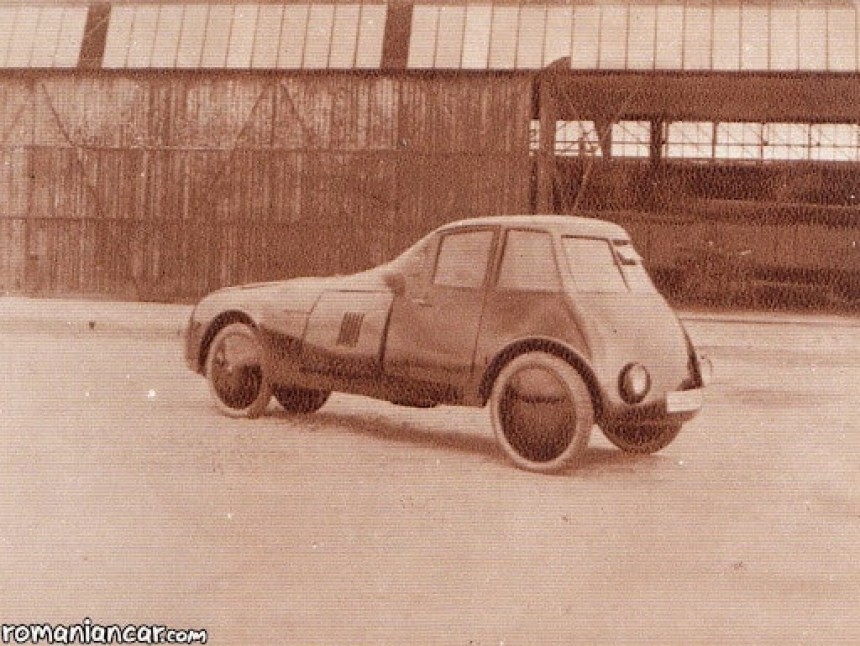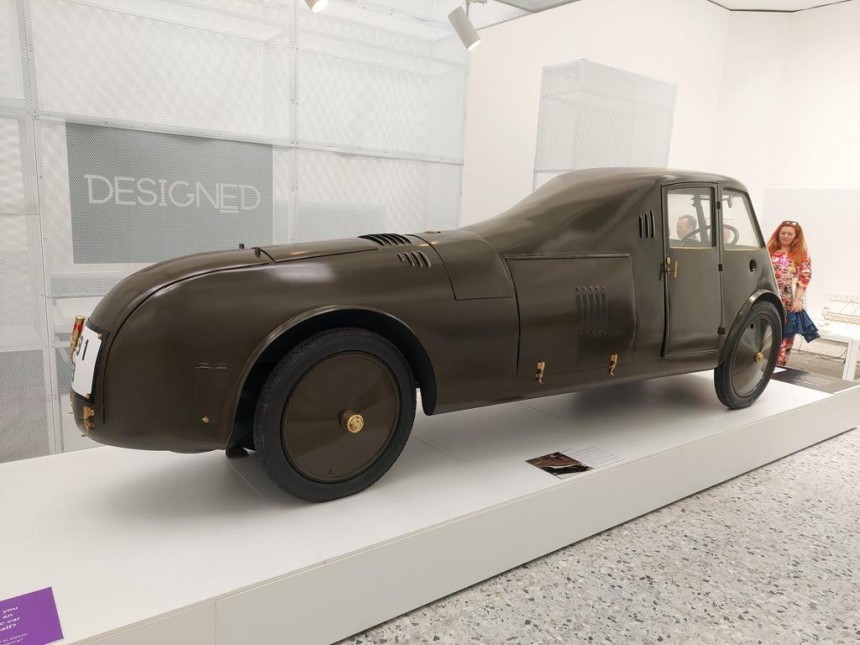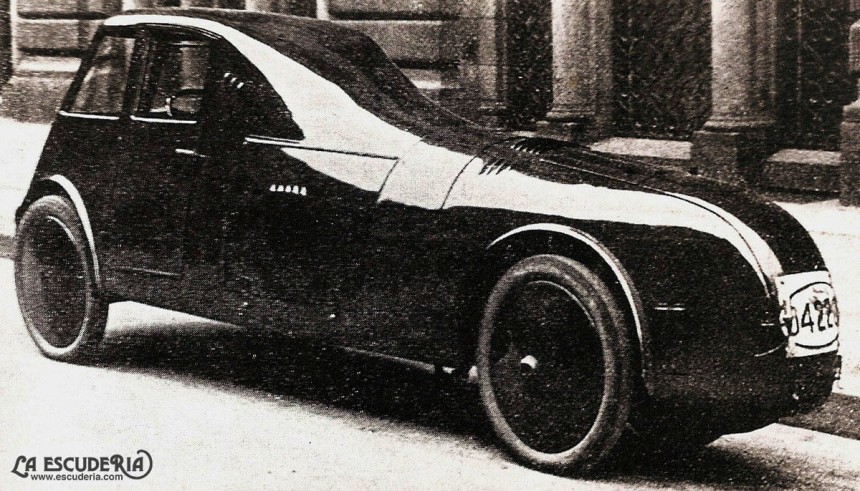Think of the fastest cars today and see what they have in common. Thousands of horsepower? Train-pulling heaps of torque? Claustrophobically low bodies? Engines behind the driver? Wide tracks and fat tires? ‘All of the above’ would be a good answer, but the answer isn’t just skin-deep; it’s scientifically philosophical.
The common denominator of all hypercars and supercars of today is a bird—the flying avian type, to be specific. Better yet, the upper half of a bird in flight. Animal rights defenders, don’t take this literally; no carmaker in the world has cut up a fowl horizontally from beak to tail and said, ‘This is just what my future multi-million dollar car should be.’ A musician did that for them 100 years ago - on paper.
An amateur musician who also happened to be a highly talented and skilled engineer by trade. The Royal Technical Higher School of Charlottenburg in Berlin awarded his Aerodynamics and Mechanics of Aircraft degree. His name was Aurel Persu, a Romanian engineer who, at the age of 23, also received an award from the German Ministry of Education for his research on the behavioral features of spaceships in outer space.
All nice and fine so far – except all that occurred in 1913. Airplanes were still in their infancy, and even the most daring and brilliant minds in the world weren’t yet grasping the concept of travel beyond the boundaries of our planet.
And yet here was 23-year-young Persu, emitting theories on how would a flying machine act in outer space. At the same time, his contemporaries were still heavily reliant on horse power. As in the power of equine mammals, not the standard unit of measure for reciprocating piston engines.
Aurel Persu was born in 1890, and even before graduating first in class in Berlin, he set about designing an improved automobile. Unlike many other brave souls who came up with theories on what a better car should be, Persu rolled up his sleeves and put it in writing, then breveted his invention in ten countries (including the United States).
Not only that, but he also built a prototype with his own money and help from a few German companies. In 1923, the car was up and ready, and in 1924, the Romanian engineer was awarded his patents for the vehicle. By then, several names were deeply rooted in the carmaking business on both sides of the Atlantic. Still, none of them were even close to this radical machine created by the out-of-the-box-thinking Romanian.
Take that literally: the cars of the twenties were boxes with wheels, appallingly inefficient, relatively slow for the most part, and painfully incorrect from a physics perspective. Persu, like other geniuses before him, took inspiration from nature (something that appeared as an excentricity to the square-headed majority at the time) and transplanted millions of years of evolution into his automobile.
Using a flying bird as a model, the engineer quickly reached the same conclusion as others before him: dynamics is the most important aspect of improving the motion of a body through a fluid medium. Since he was concerned with defeating air, aerodynamics became his ally. He took a blank sheet of paper and started from the concept that the perfect aerodynamic shape is a falling drop of water.
However, cars don’t fall freely toward the ground but move under their power over a flat surface, so the water droplet hypothesis was only partially applicable. Aurel Persu turned to the best air-splitting body ever conceived: a flying bird. Seen from the side, the profile of a bird flapping its wings to defeat air resistance gave the inventor a starting point.
Nature works on a very simple principle – minimum effort possible. There’s a reason trees have round trunks, birds don’t have corners, and fish are slippery: they have evolved to consume the lowest quantity of energy for any given purpose. Hence, Persu based his concept on this radical idea: reducing drag is a far better way of going forward than increasing horsepower. (An arrogant Italian who was also heavily involved in building cars would have strongly disagreed, but even Ferrari had to give in to science).
Naturally, the Persu car was conceived with wheels in mind. But that’s about all the similarities between his vehicle and everyone else’s from that period. Instead of putting large, physics-offending fenders over the wheels, he went a step further. He put the entire body work over them. He designed and built the car on Planet Piston with inboard and in-body wheels.
Having solved one aspect of the air friction equation, Persu carefully sculpted a very fluid shape for the body: a pear cut longitudinally (just like the one in the gallery). The engineer preferred a more adequate comparison: the upper half of a bird’s body in flight, with a bulge at the front and a very streamlined rear.
To achieve the desired shape, the Romanian mastermind placed the engine behind the cockpit in the narrower section of the chassis. The German authorities formally recognized Persu's idea in November 1922. He was given his first patent for ‘The idea of an aerodynamically shaped automobile with all four wheels incorporated in the coachwork and without any exterior piece.’
The author described his invention as resembling the upper half of a bird's body (say a pigeon), with a unified volume of semicircular cross-section (with the base downward), higher and broader in front, about one-third of the vehicle's length. The sections diminish gradually towards the rear to eliminate the low-pressure zones that would otherwise form, slowing down the automobile and drawing it backward.
Furthermore, Persu conceived his car with unequal track widths, eliminating the need for a rear differential. With the driven wheels so close to one another, it wasn’t necessary to install the transmission mechanism on the short rear axle. While this may seem like the car’s stability would be greatly affected by its narrow rear section, extensive tests performed by the engineer himself proved all theories wrong.
With the passenger cabin at the front, all the car’s mechanicals are behind the cockpit – the water-cooled engine, the transmission, the gas tank, and the coolant radiator. A metal frame was custom-built for the car, and the body was built according to the methods used by the aircraft industry of the time, using wood panels clad in aluminum sheets.
The Persu car's wheelbase is 3.2 m (126 inches), the front track is 1.2 m (47.2 inches), and the rear is nearly half (0.7 m / 27.5 inches). Bumper to bumper, the unlikely automobile from 1924 measures 4.6 m (181 inches); it sits at 1.6 meters at its tallest point (63 inches) and is surprisingly narrow at 1.4 meters (55 inches).
If you look at the original drawings from the patent and compare those to the car, you’ll notice several discrepancies—the engineer made a few adjustments. Still, the car’s performance was not affected. The 40-hp 1.4-liter inline-four, built by AGA-Werke Berlin, could take the car to 62 mph (100 kph), and thanks to its unusual, slim rear, the vehicle remained perfectly stable while taking sharp corners at 35 mph (60 kph).
When Persu patented and built his aerodynamically correct prototype, the average resistance coefficient of contemporary cars (Cx) was around 1.0, with the best scores going as low as 0.8. The Romanian invention of 1924 was slightly ahead of its time, with a Cx of 0.20 — for example, a Tesla Model S of today is rated at 0.23 in the friction index.
This means that, at 62 mph / 100 kph, the Persu machine only needed one-fifth of the power required by other cars of its day to cruise at the same speed. Translated into efficiency, the slippery rear-engined bird-styled automobile had a fuel economy of 47 miles per gallon of gasoline. That’s five liters for every 100 kilometers, something even the high-tech cars of today aspire to.
The prototype's inventor drove it from Germany to Romania. Aurel Persu continued to use the car for many years before donating it to a Romanian museum. According to his estimates, the engineer covered around 150,000 kilometers (around 90k miles) with his 1924 automobile. In 1969, the pear-shaped invention was offered (in perfect functioning order) to the Romanian National Technical Museum in Bucharest, where it sits to this day.
The Romanian’s conclusions from the early twenties were eventually reached by all carmakers after extensive studies and wind testing sessions—just many years later. However, the Persu patent might have been applied to production cars much earlier. General Motors and Ford both approached him with proposals to buy his patent.
The engineer had one condition (to which the two Detroit Big did not agree): to have the design applied to mass-produced automobiles and not shelved in the archives. Eventually, Aurel Persu refused to sell the rights to his streamlined car, and the prototype remained the only example ever made of the first aerodynamically correct automobile in the world.
When he wasn’t busy studying aerodynamics and other principle of mechanics, Aurel Persu was an avid musician. After he retired from the academic field in 1969, he continued to play the cello in a symphonic orchestra.
An amateur musician who also happened to be a highly talented and skilled engineer by trade. The Royal Technical Higher School of Charlottenburg in Berlin awarded his Aerodynamics and Mechanics of Aircraft degree. His name was Aurel Persu, a Romanian engineer who, at the age of 23, also received an award from the German Ministry of Education for his research on the behavioral features of spaceships in outer space.
All nice and fine so far – except all that occurred in 1913. Airplanes were still in their infancy, and even the most daring and brilliant minds in the world weren’t yet grasping the concept of travel beyond the boundaries of our planet.
And yet here was 23-year-young Persu, emitting theories on how would a flying machine act in outer space. At the same time, his contemporaries were still heavily reliant on horse power. As in the power of equine mammals, not the standard unit of measure for reciprocating piston engines.
Not only that, but he also built a prototype with his own money and help from a few German companies. In 1923, the car was up and ready, and in 1924, the Romanian engineer was awarded his patents for the vehicle. By then, several names were deeply rooted in the carmaking business on both sides of the Atlantic. Still, none of them were even close to this radical machine created by the out-of-the-box-thinking Romanian.
Take that literally: the cars of the twenties were boxes with wheels, appallingly inefficient, relatively slow for the most part, and painfully incorrect from a physics perspective. Persu, like other geniuses before him, took inspiration from nature (something that appeared as an excentricity to the square-headed majority at the time) and transplanted millions of years of evolution into his automobile.
However, cars don’t fall freely toward the ground but move under their power over a flat surface, so the water droplet hypothesis was only partially applicable. Aurel Persu turned to the best air-splitting body ever conceived: a flying bird. Seen from the side, the profile of a bird flapping its wings to defeat air resistance gave the inventor a starting point.
Nature works on a very simple principle – minimum effort possible. There’s a reason trees have round trunks, birds don’t have corners, and fish are slippery: they have evolved to consume the lowest quantity of energy for any given purpose. Hence, Persu based his concept on this radical idea: reducing drag is a far better way of going forward than increasing horsepower. (An arrogant Italian who was also heavily involved in building cars would have strongly disagreed, but even Ferrari had to give in to science).
Having solved one aspect of the air friction equation, Persu carefully sculpted a very fluid shape for the body: a pear cut longitudinally (just like the one in the gallery). The engineer preferred a more adequate comparison: the upper half of a bird’s body in flight, with a bulge at the front and a very streamlined rear.
To achieve the desired shape, the Romanian mastermind placed the engine behind the cockpit in the narrower section of the chassis. The German authorities formally recognized Persu's idea in November 1922. He was given his first patent for ‘The idea of an aerodynamically shaped automobile with all four wheels incorporated in the coachwork and without any exterior piece.’
Furthermore, Persu conceived his car with unequal track widths, eliminating the need for a rear differential. With the driven wheels so close to one another, it wasn’t necessary to install the transmission mechanism on the short rear axle. While this may seem like the car’s stability would be greatly affected by its narrow rear section, extensive tests performed by the engineer himself proved all theories wrong.
With the passenger cabin at the front, all the car’s mechanicals are behind the cockpit – the water-cooled engine, the transmission, the gas tank, and the coolant radiator. A metal frame was custom-built for the car, and the body was built according to the methods used by the aircraft industry of the time, using wood panels clad in aluminum sheets.
If you look at the original drawings from the patent and compare those to the car, you’ll notice several discrepancies—the engineer made a few adjustments. Still, the car’s performance was not affected. The 40-hp 1.4-liter inline-four, built by AGA-Werke Berlin, could take the car to 62 mph (100 kph), and thanks to its unusual, slim rear, the vehicle remained perfectly stable while taking sharp corners at 35 mph (60 kph).
When Persu patented and built his aerodynamically correct prototype, the average resistance coefficient of contemporary cars (Cx) was around 1.0, with the best scores going as low as 0.8. The Romanian invention of 1924 was slightly ahead of its time, with a Cx of 0.20 — for example, a Tesla Model S of today is rated at 0.23 in the friction index.
The prototype's inventor drove it from Germany to Romania. Aurel Persu continued to use the car for many years before donating it to a Romanian museum. According to his estimates, the engineer covered around 150,000 kilometers (around 90k miles) with his 1924 automobile. In 1969, the pear-shaped invention was offered (in perfect functioning order) to the Romanian National Technical Museum in Bucharest, where it sits to this day.
The Romanian’s conclusions from the early twenties were eventually reached by all carmakers after extensive studies and wind testing sessions—just many years later. However, the Persu patent might have been applied to production cars much earlier. General Motors and Ford both approached him with proposals to buy his patent.
When he wasn’t busy studying aerodynamics and other principle of mechanics, Aurel Persu was an avid musician. After he retired from the academic field in 1969, he continued to play the cello in a symphonic orchestra.
